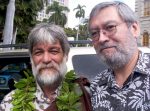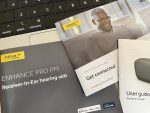I appreciate feedback received from a couple of friends to my recent post about the new study on colonoscopies.
One pointed out:
Appears that the NordICC researchers are intent on focusing their
attention on the entire population of”invited” subjects, as opposed to
finding out more about what distinguishes the members of that group
who opted to have a colonoscopy from those who did not.The opt-ins many be very different from the opt-outs (and from the
general population), so we cannot generalize from the colonoscopy
results of the opt-ins to the general population. Opt-ins may be older
and generally less healthy than the opt-outs, and they may have been
urged to by their physicians to have the colonoscopy.
Then another friend weighed in with his very useful and informative expert opinion, which I’m taking the liberty of sharing in full. Among other things, he points out the pressure of the colonoscopy industry which appears to have skewed the types of screening most often recommended to patients.
Aloha Ian:
It’s Dr.John Garvie retired gastroenterologist and neighbor. Have a few thoughts for you and your readers consideration.
1. This is the FIRST randomized controlled trial ever performed to evaluate the efficacy of colonoscopy screening despite the fact that widespread screening was adopted in the US in 2000.
2. The study was performed on patients from Sweden, Norway and Poland which all have socialized health care systems with the intent to determine if the enormous cost of mass colonoscopy screening was cost effective (worth it).
2. Once Medicare agreed to cover CRC screening all insurers gradually followed suit.
3. The impetus to cover was accelerated by a study performed at OHSU (Oregon Health Sciences University) late 1990’s and published in the NEJM showing @3% incidence of right colon premalignant pathology not detected by the more limited flexible sigmoidoscopy which only examined the left colon.
4. Understand that screening applies to healthy average risk patients. The generally accepted lifetime average risk for CRC is 5%.
5. Also understand that screening recommendations include an option menu to include stool testing for blood, stool testing for DNA abnormalities, sigmoidoscopy, virtual colonoscopy (done w CT) and colonoscopy.
6. Over time GI docs abandoned virtually all options except colonoscopy and a burgeoning industry was started. The argument was the progenitor lesion (premalignant polyp) could be identified and removed
7. Today 85% of GI docs income is derived from colonoscopy. I personally know multiple GI docs who perform 60-80 colonoscopies each week.
8. CRC incidence started to decline before 2000 before widespread screening was adopted.
9. Back to the study: it is well-designed and the numbers are robust enough to show statistical significance. The bottom line conclusion was that the ABSOLUTE risk reduction between the examined and the un- examined groups was not significant. The result was published after 10 years of follow up and the authors with continue to follow for an additional 5 years.
10. The authors queried whether the more limited and cheaper sigmoidoscopy may be just as good as the more invasive and expensive colonoscopy.
11. More studies are in progress and will be important to validate or refute this report.
12. My bias is that a good procedure (colonoscopy) has been oversold and overused. A single high quality normal colonoscopy after age 50 followed by less invasive stool tests until age 75 will prevent colon cancer virtually all average risk patinas.
Regards,
John




